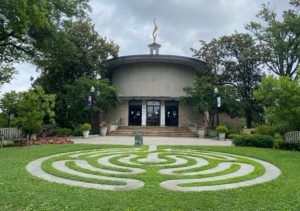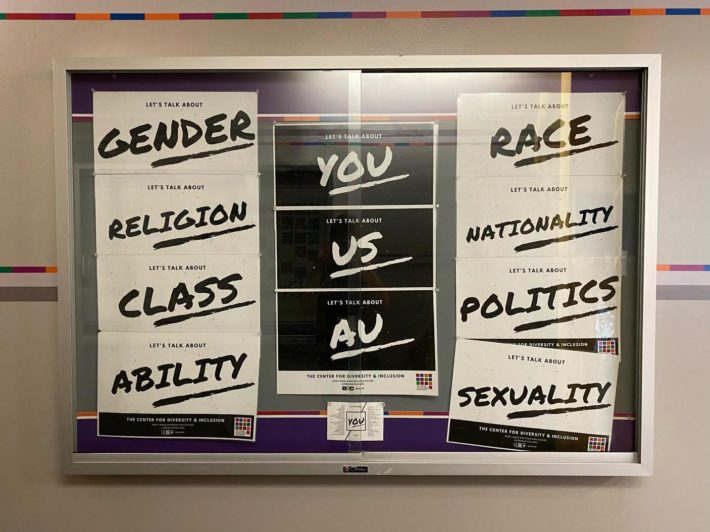By Bralyn Louise
Faculty and students called college campus diversity and open-mindedness refreshing and important factors in both sustaining and contributing to a more inviting culture, but they recognized inclusion efforts are ongoing.
Marissa Bodden, 17, a high school senior from Brooklyn, is at American University this summer studying directing and acting for the camera. With more than a year of remote learning, Bodden and others have had time to reflect on what they’re looking for in a college social environment.

“What I look for in a college campus’ culture is an inviting culture,” said Bodden, as she ate breakfast on campus.
Bodden hopes to become a director to represent minorities and women of color saying those stories are underrepresented in film and media. To tell those stories and prepare for that career, Bodden is looking for universities that offer practical courses, but she said diversity in colleges is a major factor in her searching process.
She expressed her desire for a college that will have her leave with a more evolved perspective than when she arrived.
American University sits in Northwest Washington, D.C., which is arguably the most political city in the United States. Students come from all 50 states and 123 countries, according to recruitment materials.
The campus also hosts 150 student-run clubs and organizations that provide students with more opportunities to meet and converse with people from a variety of religious, ethnic and racial backgrounds. Examples of clubs include the Muslim Students Association and AU Pride, an LGBTQ+ group.
There is also a Center for Diversity and Inclusion located on campus to help people feel a sense of belonging and to provide an opportunity to learn. In the School of Communication at American University, Priya Doshi, a senior professorial lecturer, acts as the School’s inclusion officer, a role that enables her to liaison with students, staff and faculty to create a more “aware” and “inclusive” environment on campus.
“We did a special workshop around working with non-native English speakers and helping faculty to understand,” Doshi said.
The workshop was meant to help faculty learn to not focus on punctuation issues and other aspects of language that may come harder to those students. Doshi said they taught faculty to instead focus on students’ understanding of the assignment and how well they followed instructions.
It’s not just faculty seeking more understanding of cultural, language and social differences. Some students, too, are not accustomed to such diversity.
Carla Williams grew up in The Woodlands, Texas. Its population stands at 113,819, and U.S. Census data shows the city is 84 percent white.
When she arrived at Lone Star Community College in Houston, Williams said her first campus experiences were a “culture shock” compared to her hometown.
“There’s so many different types of people there,” said Williams, who identifies as a woman of color. “It’s such a relief to be able to go there after living in The Woodlands.”
“The world is much different than the world that I grew up in,” she continued. “I want to be accepting.”
This summer, Williams is a teaching assistant with the National Student Leadership Conference. She said NSLC surprised her with its openness as well.
“NSLC really changed my life,” Williams said.
The program made Williams more confident in both what she wanted to accomplish in her life, but also in herself.
“The culture really comes from the group of students that are here and the atmosphere that students create between themselves,” Williams said.
Open-mindedness is not a small discussion either, and is one that this month moved from college campuses to Congress. General Mark Milley, chairman of the Joint Chiefs of Staff, gave his opinion on the hot button issue of Critical Race Theory when asked by a Florida congressman.
“I think it’s important for those of us in uniform to be open-minded and widely-read,” Milley said during the discussion.
Future discussions of diversity, equity and inclusion remain a focus for colleges and universities.
Websites dedicated to finding and keeping track of college diversity exist and are out there for those looking for more information.
Niche, a website that provides students with information on thousands of colleges, recently posted a list of 2021’s most diverse colleges in America. Lynn University in Boca Raton, Florida, ranked the highest.
Back at American University, faculty like Doshi have made this issue a primary focus of their work, as she recognized there is more work to be done.
“Continuing to center work that diverse students are doing,” Professor Doshi said in regards to being asked what can be done. “It’s important to tell those stories because I think the more you tell those stories, the more people feel inspired to contribute to the diversity of the community.”
